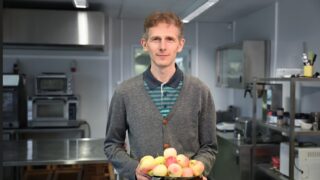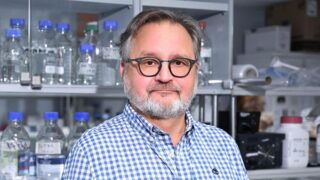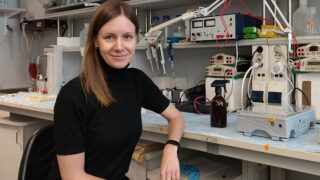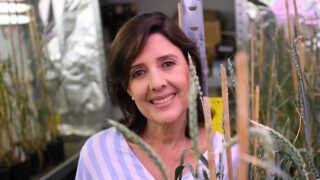
Modern food products and environmental factors have significantly affected the composition of human gut microbiome. A healthy microbiota is the basis for good health and wellbeing. Gut bacteria are involved in the breakdown of non-digestible by human enzymes food components (mainly dietary fibres). Finding the links between the microbiota and diet enable to develop personalised dietary recommendations and food technologies to help prevention of pathogenic processes in the digestive tract. The main aims are to:
1. find links between the gut microbiota, nutrition and health characteristics,
2. analyse metabolism of gut bacteria (development of metabolic models),
3. identify patterns of gut microbiota characteristic to different diseases,
4. develop new technologies to produce microbiota-based therapeutics (both bacterial and bacterial-virus i.e. phage-based).
5. develop technologies to produce microbiome-supporting food products
Research Methods
1. advanced continuous cultivation and high-throughput batch methods to describe starter cultures, to optimize the production process, virome propagation etc.
2. high-throughput sequencing (16S rRNA gene, metagenomics) to study microbial communities in human samples and cultivation samples,
3. analytical methods, including HPLC, GC, micro-GC, UPLC coupled with MS (/ MS) for metabolite analyses,
4. nutrition studies with metadata collection methods (recalls, food diaries, health questionnaires),
5. Mathematical methods are used in the statistical analysis of food processes and in the modeling of fermentation processes.
Main research topics
Metabolism of gut microbiota
Intestinal bacteria produce compounds such as organic acids or gases from food components that play role in human metabolism, e.g. provide energy for human body cells, modulation of intestinal peristalsis, regulation of hormonal and nervous system. On the other hand, excessive production of acids or gases may cause gastrointestinal symptoms. The degradation of dietary fibres and the effect of environmental conditions on bacterial metabolism is a key focus of our research group. We develop food technologies and dietary recommendations to improve acid formation or reduce gas production from dietary fibres corresponding to different microbiota type.
This topic will be continued in a new EU project from September 2024 in collaboration with the University of Helsinki in Finland and University of Örebro in Sweden: FIBER-MATCH, which aims to develop suitable food components for patients with irritable bowel syndrome.
We are collaborating with Elsavie OÜ and PERH (Dr. Jüri Teras) on mapping gut bacteria associated with different diseases.
Cultivation of microbial consortia
The gut microbiota consists of hundreds of different bacteria. The colon microbiota is affected by food production and processing, eating habits, inherited potential and environmental factors. Dietary fibre is one of the main drivers that modulates the composition of gut microbiota. Constant exposure to harmful substances can modulate the gut microbiota towards pathological processes. In such cases, restoration of the gut microbiota can be achieved by faecal transplantation or implantation of artificial microbial consortia. A new alternative, in which we are also involved, is the propagation of bacterial viruses (phages). In collaboration with researchers at the University of Copenhagen, we have developed cultivation-filtration technologies for the propagation of bacterial viruses. We have studied the effects of the virome preparations in a Clostridium difficile infection or diet-induced obesity mouse models. Understanding the relationships between food components and colon microbiota and bacterial virome would make it possible to develop applications for dietary recommendations or treatment and prevention of diseases.
We continue to collaborate with the University of Copenhagen on the PhageX project.
Development of microbiome-friendly food technologies
The increase in food refining over the last century has reduced the availability of useful nutrients (dietary fibres) and bioactive compounds in foods. It directly affects the composition of gut microbiota, as dietary fibres are the main substrates for beneficial gut bacteria. Our recent work has focused on the application of sourdough technology to the production of fibre-rich cereal products to increase the bioavailability of nutrients and reducing the intolerance problem that can be associated with the consumption of dietary fibre-rich foods. By fermentation more food is available for human nutrition and helps also to reduce food wastage.
In collaboration with METK, we are studying the potential of einkorn and other cereals for sourdough production.
We are participating in the COST project PIMENTO, which aims to map consumption patterns of fermented foods of inhabitants of 34 European countries.
bacterial virome, bacteriome, cultivation technologies, food, food composition, food technologies, gut microbiota, nutrition, phageome (bacterial virome)








